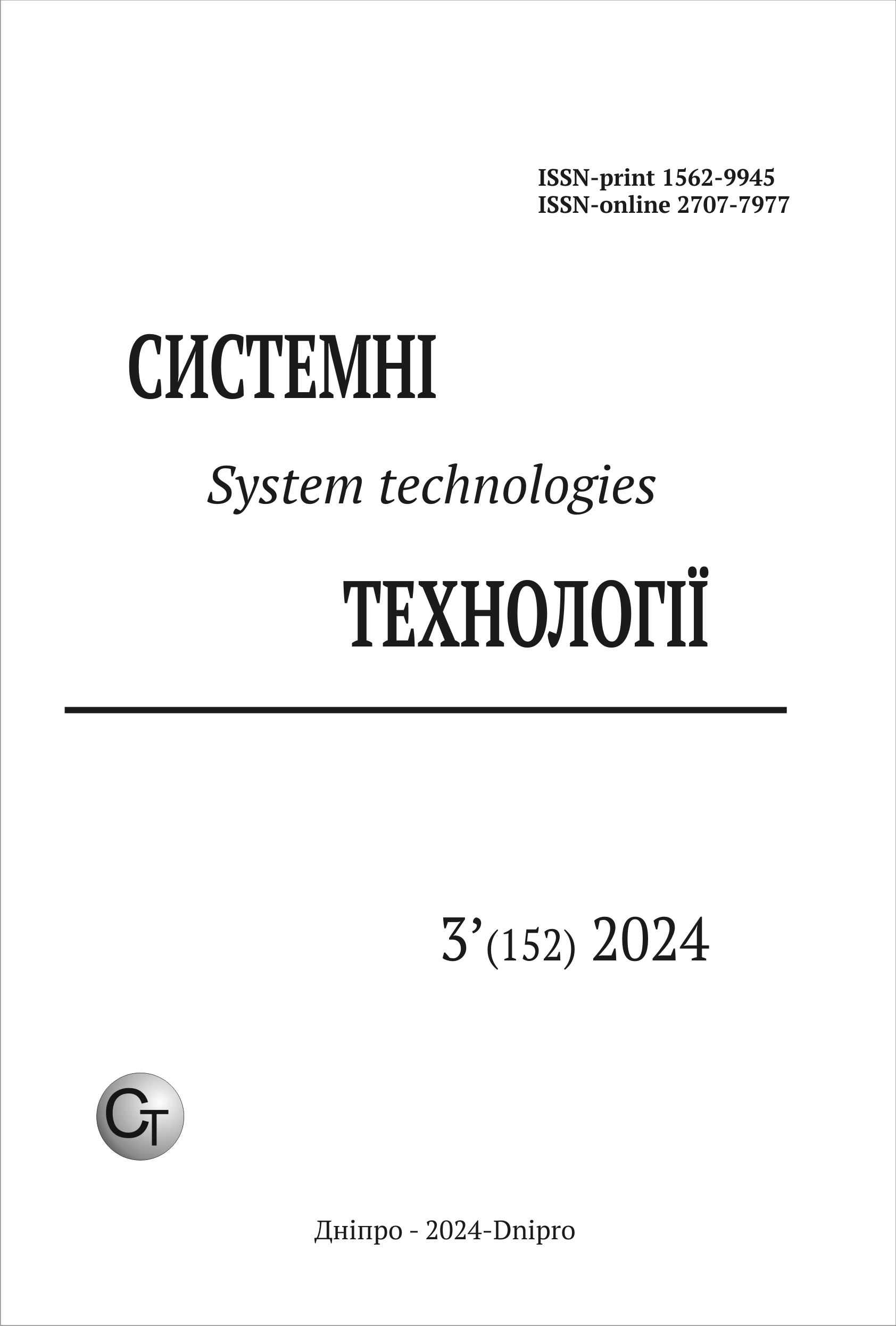ЗАСТОСУВАННЯ ЗГОРТКОВИХ НЕЙРОННИХ МЕРЕЖ ДЛЯ ВИЯВЛЕННЯ ПОШКОДЖЕНИХ БУДІВЕЛЬ
DOI:
https://doi.org/10.34185/1562-9945-3-152-2024-11Ключові слова:
розпізнавання пошкоджених будівель, згорткові нейронні мережі, комп’ютерний зір, семантична сегментація, супутникові знімки, CNN, U-Net, Google Earth.Анотація
В роботі розглянуто застосування згорткових нейронних мереж для виявлення пошкоджених будівель на зображеннях. Дослідження спрямоване на покращення розуміння та практичне застосування згорткових мереж в задачах розпізнавання пош-коджених будівель на знімках. Для досягнення мети було визначено оптимальну архітектуру згорткової мережі, а саме U-Net. Архітектура U-Net застосовується в задачах семантичної сегментації, що є перевагою для розпізнавання пошкоджених будівель, оскільки вносить більшу точність на рівні пікселів, серед інших переваг – про-стота моделі та можливість використання меншої кількості даних для навчання. Для навчання мережі було створено унікальний набір даних з використанням наявних зоб-ражень у сервісі Google Earth міста Маріуполь у 2022 році. В роботі розглянуто різні конфігурації моделей, для розрахунку якості були використані такі метрики як загаль-на точність, IoU (Intersection over Union) окремо для двох класів будівель та середній показник IoU для всіх класів. Було визначено найкращу модель серед навчених з опти-мальними параметрами для вирішення поставленої задачі.
Посилання
V Rashidian V, Baise LG, Koch M, Moaveni B. Detecting Demolished Buildings af-ter a Natural Hazard Using High Resolution RGB Satellite Imagery and Modified U-Net Convolutional Neural Networks. Remote Sensing. 2021. Vol. 13(11):2176. DOI: 10.3390/rs13112176.
Takhtkeshha, Narges, Ali Mohammadzadeh, and Bahram Salehi. A Rapid Self-Supervised Deep-Learning-Based Method for Post-Earthquake Damage Detection Using UAV Data (Case Study: Sarpol-e Zahab, Iran). Remote Sensing. 2023. Vol. 15, 1: 123. DOI: 10.3390/rs15010123.
Li, Yundong, Wei Hu, Han Dong, and Xueyan Zhang. Building Damage Detection from Post-Event Aerial Imagery Using Single Shot Multibox Detector. Applied Sci-ences. 2019. Vol. 9, 6: 1128. DOI: 10.3390/app9061128.
Ghandour, Ali J., and Abedelkarim A. Jezzini. Post-War Building Damage Detec-tion. Proceedings. 2018. Vol. 2, 7: 359. DOI: 10.3390/ecrs-2-05172.
Aimaiti, Yusupujiang, Christina Sanon, Magaly Koch, Laurie G. Baise, and Babak Moaveni. War Related Building Damage Assessment in Kyiv, Ukraine, Using Senti-nel-1 Radar and Sentinel-2 Optical Images. Remote Sensing. 2022. Vol. 14, 24: 6239. DOI: 10.3390/rs14246239.
Olaf Ronneberger, Philipp Fischer, Thomas Brox. U-Net: Convolutional Networks for Biomedical Image Segmentation. Springer. 2015. Vol. 9351: 234-241. DOI: arXiv:1505.04597
OPEN DATA PROGRAM. Maxar: вебсайт. URL: https://www.maxar.com/ open-data (дата звернення: 10.11.2023).
Google Maps, Google Earth, and Street View. Google : вебсайт. URL:
https://about.google/brand-resource-center/products-and-services/geo-guidelines/ (дата звернення: 10.11.2023).
Завантаження
Опубліковано
Номер
Розділ
Ліцензія
Авторське право (c) 2024 Системні технології

Ця робота ліцензується відповідно до ліцензії Creative Commons Attribution 4.0 International License.















